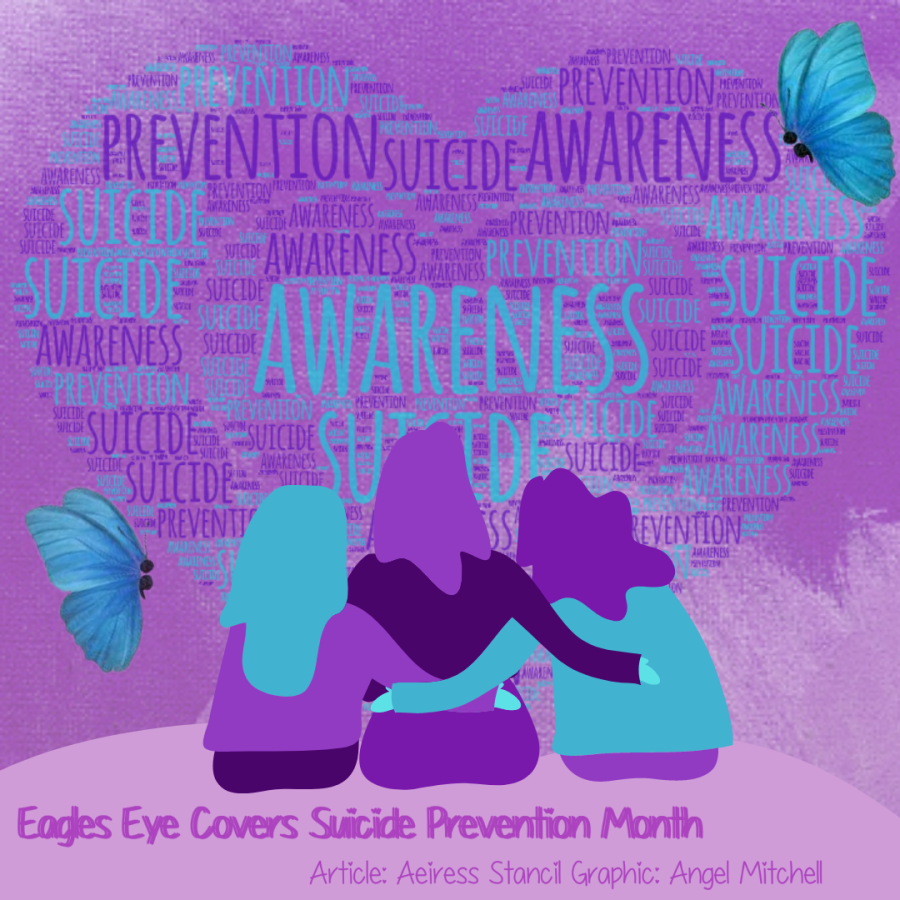Suicide Prevention Month
Although Suicide Prevention Month was in September, suicide is a year-round issue that demands our attention. According to the CDC, more than 41,000 people die by suicide each year, leaving friends and family members to deal with the grief of their loss. Suicide is the second leading cause of mortality among those aged 10 to 24, and rates are rising. I talked to one of Enloe High School’s school counselors, Ms. Kearney, and asked her about mental health in students.
What is mental health?
Mental health to me is just your overall well being, when it comes to your thoughts and experiences. It’s really important to think of your mental health as something that’s always actively going on. That whole cycle of your thoughts, your feelings, your emotions, and what you are doing to help that. It helps your mental health to take care of yourself so our brain needs that too. Doing mindfulness activities, going outside, exercising, eating good foods, all of those things help us take care of our mental health. Also being able to notice when your mental health is not in a good space. That’s the other side of it, the awareness of if you’re having some troubling thoughts or if you’re having some difficult emotions that you’re having trouble coping with: maybe you’re feeling more tired, not motivated, or lashing out at people. This is a time to do a check in on your mental health. Try to figure out what you may need, whether that’s getting help outside support in the form of counseling, or medication.
According to the CDC, more than 1 in 3 high school students had experienced persistent feelings of sadness or hopelessness in 2019, a 40 % increase since 2009. What do you think schools and administration can do to lower this trend?
Social emotional support is not just something you do, counselors do, or something that students just get at home: it’s something that we need to be thinking about constantly. It should be a part of core instruction. As we’re teaching you, higher learning math concepts or how to write an essay, I think it’s also important that we are modeling and teaching how to resolve conflict. How to cope with difficult emotions, how to manage stressors, those are all things that we are working towards embedding into the curriculum as well to help students know that we see who you are as a whole person and not just as an academic student. We all have to learn how to interact with each other, how to manage our emotions, how to handle different stressors or difficult situations. So if we’re teaching that and that’s something that is understood at school, I think that is something we can do to help with mental health and help students feel they don’t have to hide their emotions and get help.
Being a counselor during one of the most frightful and uncertain times in modern history, what ways did Covid-19 trigger more increased cases of mental health issues?
I’ve definitely seen a lot more cases of mental health issues because of isolation. So many people lost their social outlets during COVID. I think that impacted everyone’s mental health. If you’re isolated and you start struggling, it’s a lot harder to find resources for help and support, so we tried to have more conversations with parents and students to notice warning signs in people so we can still make sure people are getting help even during isolated times.
What is the school doing to spread awareness for it?
I would say as far as our Student Services Department, we do Suicide Prevention lessons with ninth graders and seniors throughout the school year. We actually will do it with ninth graders through healthful living classes In December, then we’ll do it with seniors in May. We do a presentation about warning signs for suicide and talk about what to do if you or someone you know is experiencing thoughts of suicide or harming themselves. So we go over those things to make sure students have tools and resources to get help in those areas.
What can the organization, Eagles Eye, do to spread awareness about the month?
This is a great way of doing it: having something out there that spreads awareness about suicide prevention helps people to recognize warning signs and gives them tools and resources to get help and support as needed. The more that we can normalize talking about it and making sure people know that there are ways to get help and support is the biggest thing. We don’t want anyone to feel isolated or they’re unsure on how to get help if they need it soon.
Being a teenager is hard, from the stress in school to problems at home and realizing that every decision you make in high school makes or breaks your future. These pressures can be unavoidable, and worrying about them is entirely normal. Nevertheless, you should still be aware of the warning signs of a mental health problem: persistently feeling unhappy or depressed, hopeless, or worthless. Also, you never know what someone is going through mentally, so be kind to everyone. Even a simple “hi, how are you doing today?” can make someone’s day better knowing that someone is checking on them and cares. As a school, we need to attempt to protect students’ mental health so the statistics can lower and eventually become obsolete in the future.

(She/her)
Aeiress is a senior and was on the Eagle's Eye staff for two years. This year she will be returning as the Arts and Entertainment Editor....










